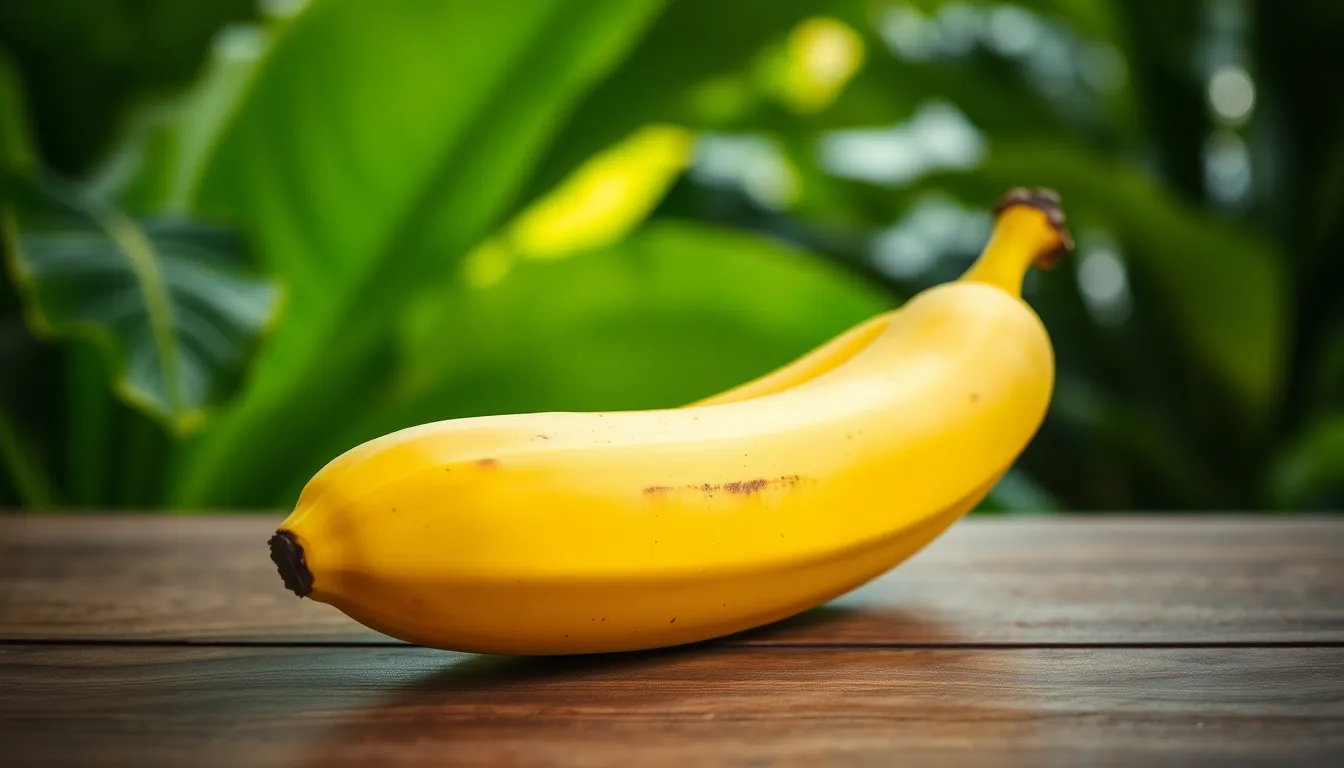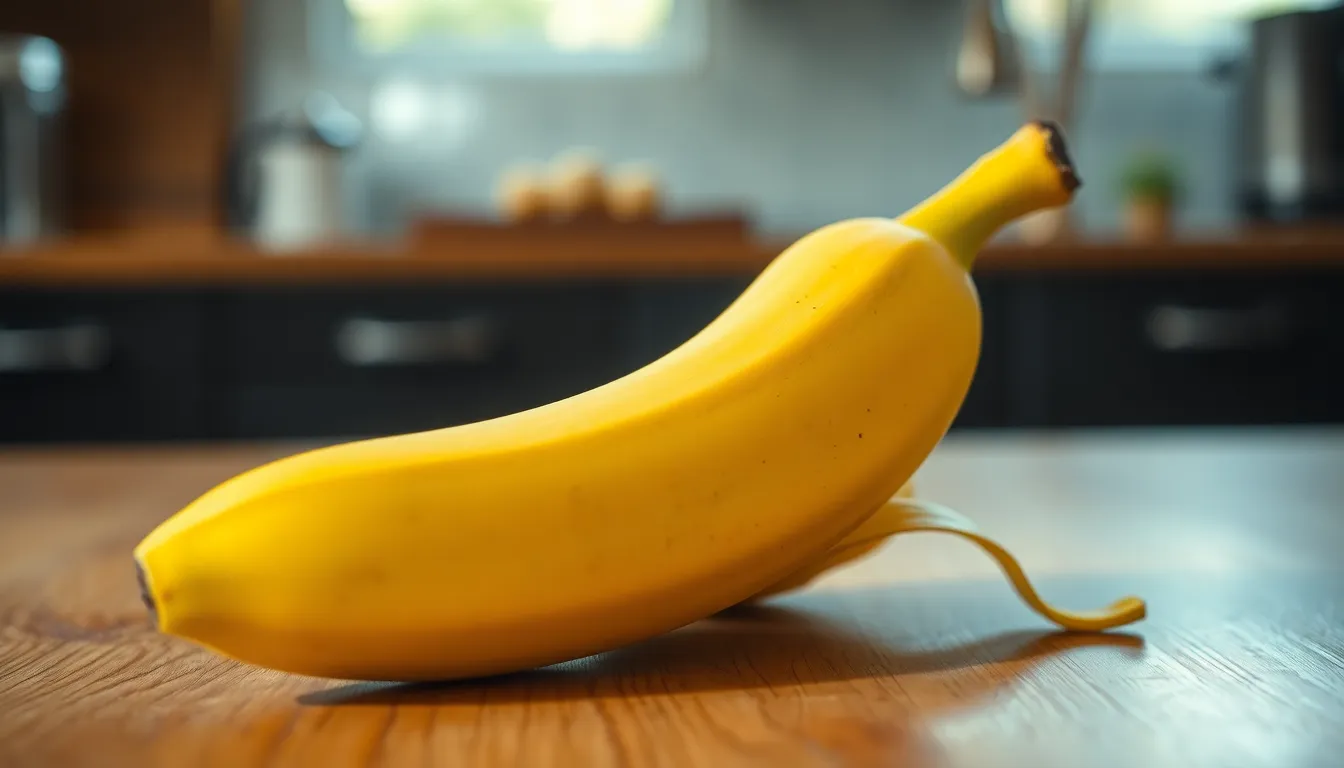Bananas are a beloved snack, but did you know they come with a side of radiation? Yes, you read that right! These yellow powerhouses aren’t just packed with potassium; they also contain a tiny amount of radiation that might surprise you. But before you start questioning your fruit choices, let’s peel back the layers on this quirky topic.
Table of Contents
ToggleUnderstanding Radiation
Radiation exists in various forms, both man-made and natural. Natural radiation originates from cosmic rays, soil, and certain foods, including bananas. Bananas contain potassium-40, a naturally occurring isotope of potassium, which is radioactive.
Radiation measurements utilize units like Becquerels (Bq) and millisieverts (mSv). One banana’s radiation exposure equates to approximately 0.1 microsieverts. Eating a banana means ingesting some radiation, but the level remains minuscule compared to daily background radiation levels.
Understanding the context of this radiation is essential. The average person receives around 10 microsieverts from natural sources daily. In comparison, consuming a single banana introduces a fraction of that amount, highlighting the generally safe levels of radiation involved.
Potassium-40 contributes to the banana’s overall radiation. Other foods also contain similar isotopes, such as nuts and potatoes. Despite concerns about radiation exposure, the quantities found in bananas do not pose health risks.
Research emphasizes that consuming bananas offers health benefits that far outweigh any minor exposure to radiation. Nutrients like potassium contribute to various bodily functions, including muscle contraction and heart health. Therefore, incorporating bananas into a diet supports well-being while introducing negligible radiation exposure.
The Concept of Banana Equivalent Dose

The Banana Equivalent Dose (BED) serves as a way to compare radiation exposure to the consumption of bananas. One banana contributes approximately 0.1 microsieverts due to its potassium-40 content, making it a tangible reference for understanding radiation levels.
What Is a Banana Equivalent Dose?
A Banana Equivalent Dose quantifies radiation exposure from consuming bananas in relation to other everyday sources. This measure illustrates how one banana’s radiation can be likened to a specific dose someone might receive from sources like cosmic rays or medical imaging. As an example, eating 10 bananas leads to an exposure of 1 microsievert, which still remains significantly lower than typical background radiation levels.
How It Relates to Safe Radiation Levels
Safe radiation levels remain well-defined in scientific literature. The average person encounters approximately 10 microsieverts of background radiation daily from environmental sources. In comparison, the radiation from consuming bananas is negligible, indicating that enjoying these fruits poses no risk. Consumption of numerous bananas will not exceed levels deemed safe by health authorities, ensuring both safety and nutritional benefit.
Measuring Radiation in Bananas
Measuring radiation in bananas reveals interesting insights about their composition. Bananas contain naturally occurring radioactive potassium-40. This isotope contributes to the low radiation levels that consumers encounter.
Natural Radiation Sources in Bananas
Natural radiation in bananas primarily comes from potassium-40. Potassium-40 represents about 0.01% of potassium content in bananas. While bananas contain radiation, the exposure remains minimal compared to other sources. Cosmic rays and soil can also emit radiation, which contributes to the overall background levels. These natural sources, including bananas, contribute to a safe consumption experience.
Factors Affecting Radiation Levels
Several factors influence radiation levels in bananas. Growing conditions play a significant role in potassium uptake. Climate, soil composition, and agricultural practices can vary the potassium content. Additionally, banana types can differ in their potassium levels. In general, ripe bananas contain slightly more potassium than unripe ones. While these factors affect radiation exposure, the resultant levels remain negligible and safe for consumption.
Radiation Exposure Comparisons
Radiation exposure from bananas is low compared to various food sources and environmental factors. Understanding these comparisons provides context for banana consumption regarding radiation levels.
Bananas vs. Other Foods
Bananas contain potassium-40, contributing to minimal radiation exposure. Common foods like nuts and potatoes also feature potassium, exhibiting similar levels of radiation. For example, almonds and avocados contain approximately 0.1 microsieverts per serving, placing them on par with bananas. Scientific estimates suggest that consuming 10 bananas results in a radiation exposure of 1 microsievert, aligning closely with doses from other safe foods. Health experts emphasize the health benefits of bananas, including their potassium content, which supports heart health. Thus, when considering the radiation exposure from everyday diets, bananas remain a safe and nutritious option.
Bananas vs. Environmental Exposure
Natural radiation from the environment plays a significant role in daily exposure levels. Cosmic rays, soil, and air all contribute to this background radiation, averaging around 10 microsieverts per day. Comparatively, one banana provides only 0.1 microsieverts, making its radiation exposure negligible. Significant exposure sources include radon gas and medical procedures, which lead to higher radiation levels. Despite bananas containing some radiation, they pose no risk when evaluated against typical environmental exposure. Thus, eating bananas aligns with a balanced diet alongside other foods while maintaining safety from radiation.
Bananas are a safe and nutritious snack that contains a small amount of radiation from potassium-40. The radiation exposure from eating a banana is negligible compared to the average daily background radiation. This minimal exposure is well within safe limits established by health authorities.
The health benefits of bananas far outweigh any concerns about radiation. Their potassium content supports essential bodily functions, making them an excellent addition to a balanced diet. Enjoying bananas can be done with peace of mind, knowing that they contribute positively to overall health while posing no significant risk from radiation.




